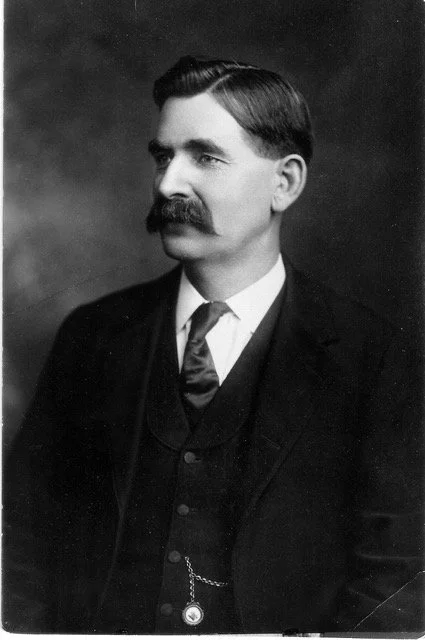A Timeless Timepiece
There's a dead person hanging in our upstairs hall. Anyone can see it and it's not scary at all. It's a picture of my great-grandfather E.E. Bower, and he's hanging among a couple dozen of our ancestors. Grandpa has a thick head of mahogany-colored hair, a big walrus mustache and a very distinguished mien.
For this article, the important thing in the photo is his watch chain that hangs from a button on his vest and drapes into his vest pocket. At the end of it is his pocket watch. You can't see it in the picture but it is in the top drawer of my dresser about thirty feet from the picture.
It's not a real fancy timepiece. The engraving has been worn off of the gold-filled case. It still keeps good time but it rarely comes out of the drawer because I rarely (never) wear a vest.
In the 19th century, a gentleman was considered underdressed if he wasn't wearing a vest. That meant he always had a place to put his watch. But as the 20th century turned, and especially when World War I broke out, Army uniforms didn't have watch pockets. Time was very important when coordinating an attack, so the officers needed accurate timepieces. They adapted a leather strap to fasten their pocket watch to their wrist so they could read it more easily. From that evolved the wrist watch.
Watches were very important in a railroad town. Before radios and GPS, the only way to keep trains from running into each other was to make sure everybody was on the same schedule. There were strict specifics for a railroad watch. White face, black numbers (no fancy spots or arrows and such) and they were expensive. So expensive that the railroad would advance you the cost of the watch and allow you to pay it off over time.
By my grandfather's day, most men had switched to wrist watches. The watch I wear on my wrist is a 1942 Hamilton that originally belonged to my Grandfather Harry. When he died, my dad wore it for several years and gave it to me when I started college. I've worn it every day for fifty years (at least) and it still keeps very good time.
The comic strip cop Dick Tracy had a "wrist radio" that he could make calls on way back in 1946. We all thought it was pure fiction and sometimes would pretend that we could call somebody on our watch. Now, of course, science fiction has become science fact.
My sons-in-law all have watches but their's are very different from mine. They are, of course, tiny Dick Tracy-like computers--electronic and connected to the internet. They tell me that their watch will tell them how many steps they have taken, where the nearest smoothie shop is in addition to getting texts and phone calls on them.
Now several of my grandchildren have "watches". They do all the things their parents' watches do plus a few other tricks. One day my grandson left home to "walk to a friend's house". Being a little suspicious, his dad turned on a watch feature that showed exactly where the little guy was. Turns out he was wandering far beyond his friend's house and was headed toward a busy street. His father hopped in the car, followed his trail and picked him up. That same grandson is able to call his parents on his phone and tell them where he is and when he's coming home for supper.
A few weeks ago our whole family went to a camp in the Vermont mountains. There were rustic cabins, a mess hall and a cold lake to swim in. The one thing it didn't have was internet or phone service. That, of course, meant that their watches didn't work. But, you know whose watch did it's job and told us all when it was time for supper? You guessed it. Grandpa wearing his grandfather's watch knew what time it was. We never missed a meal- or the internet.

